|
|
The present hall, located at 401 West 1st Street, is listed on the National Register of Historic Places.
Contruction was started in 1911 and completed in 1912. The original wooden building, having been moved to the
other side of the property, was used during the construction and then torn down.
|
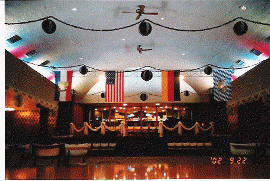
|
The Ballroom
The Ballroom, show here decorated for Oktoberfest, was remodeled in the early 1960's when the balcony was closed.
Prior to remodeling, this hall had seating for over 1000 and a working stage with flying sets and a working trap
door in the middle of the stage. The bar is now located on stage behind the band stand.
Current capacity is 350-400 for wedding receptions and 250 for big band dances.
|
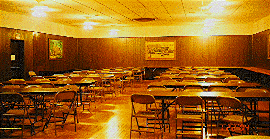
|
The Annex (Centennial Hall)
The Centenial Hall has a capacity of 120 to 180 and is ideal for smaller parties and receptions. This hall has it's own kitchen
and bar. The original paintings, done by the Grand Island Sketch Club for the Club's centennial in 1970,
depict early historic sites in the Grand Island area.
|
Der Ratskeller
In the lower level or basement of the hall is the Bar/Lounge, Main Dining Room and a 4-lane Bowing Alley.
|
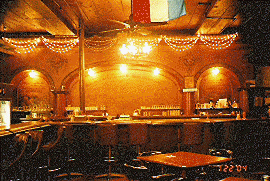
|
Bar & Lounge
The Back Bar was removed from the original building. Translation:
Center - "Where Men sing, there is peace - Evil men have no song"
Right - "Speak only the Truth - Believe only that which is clear"
Left - "He who does not love Wine, Women and Song, will remain a fool his whole life long"
|
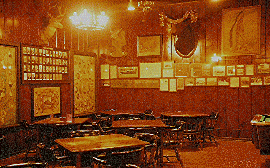
|
The card tables, also from the original building, have a place for your beer mug in each table leg.
The large panels record events in the history of the Liederkranz such as the 1896 Damen Chor which performed at the 4th Saengerfest of the Nebraska Saengerbund,
the play Die Rauber (The Robber) by Schiller, one of the first plays performed in the new building, the 1890 Mannerchor, etc.
The painting of an Indian on the south wall is of Peta-La-Sharo, Chief of the Pawnees. The artist is Grant Reynolds - the original is reported to be in the Smithsonian.
|
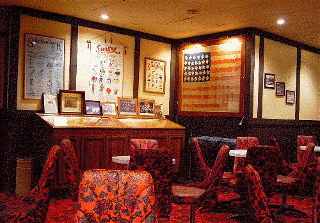
|
The recently added display case holds the very first choir books - some are hand made - pen and ink and
song books used in various Saengerfests dating from 1889.
The 34-Star Flag is reported to be the first American flag to fly in Hall County and was hand-sewn by a lady
in Iowa and brought to Nebraska by William Stolley.
The Schnitzelbank Banners are all of the same song but different German dialects.
Also displayed in the Lounge are progams and posters of the Liederkranz Children's Theater
- started by Catherine Fosket. Plays are selected so that every child that tried out gets a part.
|
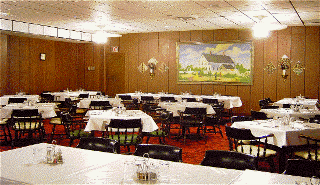
|
Dining Room
The dining room which has a capcity of about 100 is open to club members and their guests on Thursday, Friday and
Saturday evenings. Thursday night is "Hamburger Nite" featuring homemade pie and soup as well as fish and chicken
sandwiches in addition to the hamburgers. Relaxed dining is the norm for Friday and Saturday nights with a full menu available.
The Saturday night special is Prime Rib.
The original paintings, done by the Grand Island Sketch Club to commemorate the Clubs centennial in 1970, depict some of
the history of the Liederkranz.
|
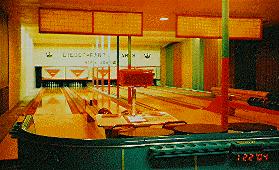
|
Bowling Alley
Bowling started with the construction of the new hall in 1912.
Jake Wahl bowled the first perfect (300) game here in 1938.
Carolyn Bell bowled her 300 game in 1943 - the first woman in Nebraska to bowl a perfect game.
The alleys were remodeled in 1959 with the installation of the automatic pin-setters.
Two alleys are currently used - two are being repaired.
|
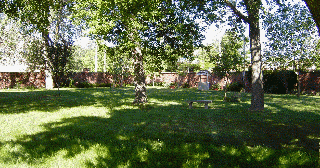
|
Courtyard
Summerfest is held here as are Sunday picnics and family reunions.
The brick wall was constructed by the Scat Club in about 1918.
|

About the Hall |
Member Info. |
Dining Room |
Schedule |
Hall Rental
Photos |
History |
History of Song |
News Articles
HOME
Grand Island Liederkranz
|
|